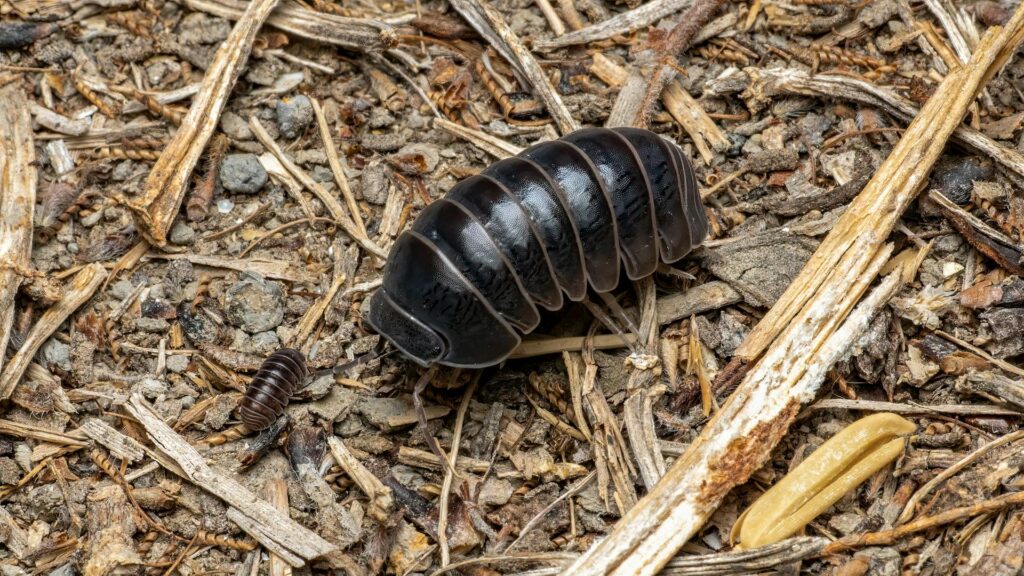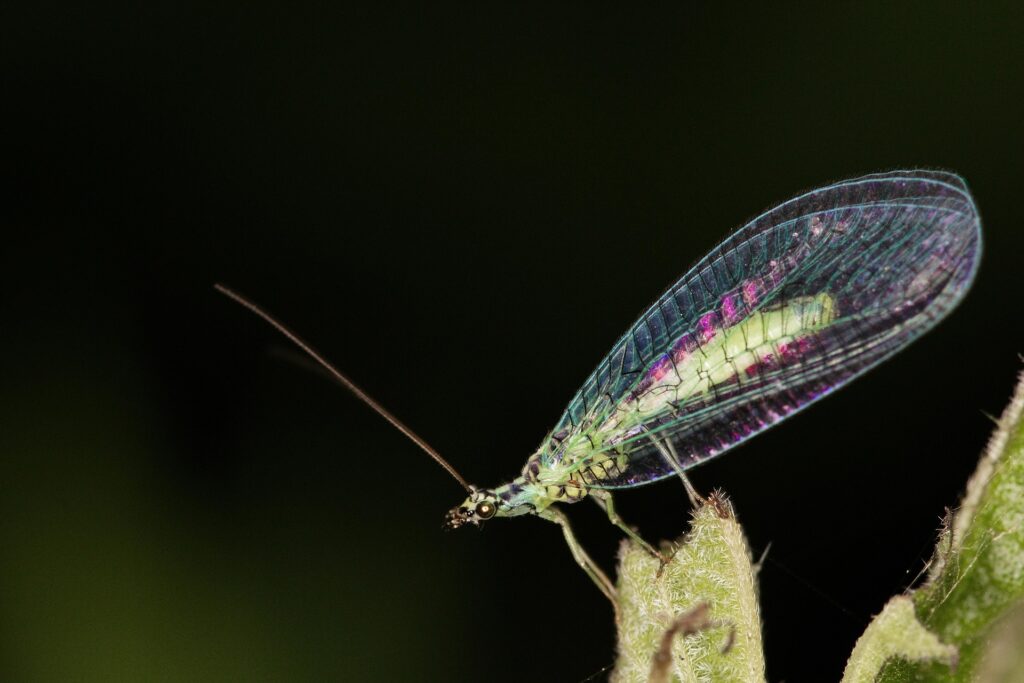You notice winged insects gathering near windows and light fixtures in sudden, unexpectedly large numbers, creating concern about whether these represent termite damage or a different pest issue requiring immediate attention. These seasonal visitors are reproductive ants participating in synchronized mating flights called nuptial flights, representing a natural but often alarming phase in ant colony development that signals mature colony establishment in or near residential structures.
Understanding flying ant biology, reproductive behavior, and the conditions that trigger swarming events enables homeowners to distinguish between temporary nuisance situations and indicators of established colonies requiring professional intervention. Their sudden appearance often causes confusion with termites, making accurate identification critical for appropriate response strategies.
Flying Ants Aren’t a Specific Species
Flying ants represent the reproductive caste within ant colonies rather than a distinct species, emerging during specific life cycle stages when colonies reach sufficient maturity to produce alates.
Most ant species demonstrate caste polymorphism, producing three distinct forms: queens, workers (sterile females), and males, with reproductive individuals developing wings specifically for dispersal flights.
Colonies typically require 3-6 years to reach reproductive maturity, at which point they allocate resources toward producing winged males and virgin queens (alates) that emerge simultaneously during favorable environmental conditions. Environmental triggers including temperature thresholds above 20°C (68°F), high relative humidity above 70%, minimal wind conditions, and recent precipitation synchronize swarming across multiple colonies, creating dramatic mass emergence events.
During nuptial flights, males and virgin queens mate aerially, after which males die within hours while mated queens land, shed their wings by breaking them off at predetermined weak points, and search for suitable nesting locations to establish new colonies. This reproductive strategy enables rapid colony expansion across territories while maintaining genetic diversity through outbreeding between colonies.
Common Ant Species That Produce Flying Ants
- Pavement ants
Small, dark swarmers gather on sidewalks, driveways, and basement slabs after warm rains. Colonies nest under concrete and along foundation cracks. Tip: reduce food sources, seal slab penetrations, and treat ant-superhighways along expansion joints. - Odorous house ants
Tiny brown alates appear in spring to early summer and are drawn to lights. When crushed, workers smell like rotten coconut. Colonies frequently move, exploiting gaps around windows and utilities. Tip: eliminate honeydew sources by managing aphids on landscape plants and tighten exterior sealing. - Argentine ants
Light to medium brown swarmers originate from sprawling multi-queen colonies. Flights often follow mild, humid weather. These ants rapidly exploit moisture and food indoors. Tip: trim vegetation off walls, manage irrigation overspray, and maintain a clean perimeter to disrupt trail networks. - Carpenter ants
Large black or red-and-black alates often emerge indoors in late spring. Workers leave sawdust-like frass with insect parts near baseboards or window frames. Swarms signal a mature colony, sometimes in water-damaged wood. Tip: track night trails along exterior siding and trim, and check for rustling sounds in walls on warm evenings. - Red imported fire ants
Reddish alates launch dramatic flights on warm, humid days after rain. Mounds appear in sunny lawns and medians; stings are medically significant. Tip: avoid disturbing mounds, keep irrigation moderate, and address colonies along fence lines and utility boxes. - Acrobat ants
Dark brown to black alates arise from colonies in rotting wood and insulation voids. Workers raise a heart-shaped abdomen when disturbed. Indoor swarms can indicate hidden moisture problems. Tip: repair roof and siding leaks and prune tree limbs contacting the structure. - Harvester ants
Robust red or orange alates disperse during hot weather, especially after summer rains. Colonies build clean, gravelly discs around nest entrances and forage seeds. Tip: keep play areas and pet zones clear of nests; these ants can sting. - Big-headed ants
Alates originate from colonies with two worker sizes; nests run under pavers, edging, and slab gaps. They can displace native ants and invade kitchens. Tip: lift and reset landscape blocks with a clean sand base and remove food residues along hardscape edges. - Rover ants
Very small, pale-brown alates drawn to windows and lamps in warm months. Colonies exploit micro-gaps around doors and stucco terminations. Tip: improve door sweeps and weatherstripping and store sweets in sealed containers. - Crazy ants (including tawny crazy ant in some regions)
Erratic, rapid movement; alates less commonly noticed but colonies expand aggressively by budding. Indoors, they exploit electronics and cluttered voids. Tip: declutter utility closets, manage mulch depth, and treat perimeter voids professionally if activity is widespread.
How Often Do Ant Colonies Swarm?
Ant colonies demonstrate predictable swarming behaviors triggered by specific environmental conditions and physiological readiness within mature colonies.
Swarming events occur infrequently throughout colony lifespans, typically once annually during optimal seasonal windows when environmental conditions align with colony reproductive readiness. Geographic regions demonstrate characteristic swarming seasons—spring emergence (March-May) predominates in temperate zones, while tropical and subtropical areas may experience multiple swarming periods annually during warm, humid conditions.
Weather-dependent triggers create synchronized emergence across neighborhoods when atmospheric pressure changes, temperature warming following rain events, and high humidity combine within narrow timeframes. Individual alates can travel 1-3 kilometers from parent colonies during dispersal flights, meaning indoor sightings don’t necessarily indicate immediate proximity to nesting sites.
Indoor swarm emergence strongly suggests colony establishment within structural voids including wall cavities, subfloor spaces, roof voids, or insulation gaps where queens successfully established colonies during previous seasons. Repeated indoor emergence events across multiple years indicate established, reproducing colonies requiring professional assessment and management intervention.
How to Recognize Flying Ants In and Around Your Home
Accurate identification distinguishes flying ants from termite swarmers through morphological characteristics that reflect their distinct evolutionary origins and ecological roles.
Body segmentation: Flying ants demonstrate pronounced three-part body structure with narrow, pinched waists (petioles) between thorax and abdomen, contrasting with termites’ uniform, broad-waisted body profiles lacking clear segmentation.
Wing structure: Ant alates possess two wing pairs with distinct size differences—forewings measuring 6-12mm significantly exceed hindwing length of 4-8mm—while termite swarmers display four equal-length wings extending well beyond body length.
Antennae configuration: Ant antennae show characteristic elbowed or geniculate structure with distinct angles, whereas termite antennae remain straight and bead-like without angular joints.
Size variation: Flying ant dimensions vary substantially by species, ranging from 4mm in smaller species like odorous house ants to 18mm in carpenter ant alates, with queens typically 25-50% larger than male alates.
Coloration patterns: Species-specific coloration ranges from pale yellow-brown in Argentine ants to jet black in carpenter ants, with some species displaying red-brown thoraxes and black abdomens creating distinctive two-toned appearances.
What Attracts Flying Ants to Your House?
Multiple environmental and structural factors create conditions that attract swarming alates and support colony establishment near or within residential buildings.
Microclimate conditions: Warm, humid microclimates within structural voids, attics, crawlspaces, and wall cavities provide ideal conditions triggering swarm emergence, with temperatures 2-5°C above ambient outdoor conditions accelerating reproductive readiness.
Artificial lighting: Positive phototaxis drives alates toward artificial light sources during evening and nighttime swarms, with windows, exterior lighting, and interior lamps creating strong attraction that concentrates flying ants around illuminated areas.
Structural penetrations: Gaps around utility conduits, window frames, door sweeps, ventilation openings, and foundation cracks provide entry routes requiring only 1-2mm clearance for ant passage into indoor environments.
Established colonies: Proximity to existing mature colonies within 50-100 meters creates high probability of swarm observation, with parent colonies in landscape features (tree stumps, mulch beds, retaining walls) or structural elements producing annual reproductive flights.
Moisture accumulation: Areas with elevated moisture from plumbing leaks, poor drainage, condensation, or water intrusion support both colony establishment and the prey insects that sustain developing ant populations.
Why It’s Hard to Get Rid of Flying Ants
Effective flying ant management requires addressing hidden colonies rather than treating visible alates, creating challenges that exceed typical homeowner capabilities.
Surface treatments targeting visible flying ants prove ineffective because alates leave parent colonies permanently during nuptial flights, never returning to original nesting sites regardless of treatment applications. Colony locations within concealed structural voids—between walls, under floors, above ceilings, or within insulation—remain inaccessible to conventional treatment methods without professional-grade equipment and techniques.
Reproductive colonies contain queens capable of producing 800-1,500 eggs annually for 15-28 years depending on species, meaning even successful alate elimination leaves reproductive capacity intact for subsequent seasons. New swarm events occur annually once colonies reach maturity, creating recurring infestations without comprehensive colony elimination strategies.
Entry point complexity further complicates management, as ants exploit multiple structural penetrations simultaneously, with sealing visible gaps often redirecting ant traffic to alternative routes rather than preventing access. Professional intervention becomes necessary when swarming recurs across multiple years or when large numbers emerge from indoor locations indicating internal colony establishment.
What Pest Control Professionals Are Searching for During an Inspection
Professional pest control services accurately distinguish flying ants from termite swarmers, preventing misidentification that leads to inappropriate treatment applications. Expert assessment from a pest control service determines whether observed swarms originate from external colonies presenting minor nuisance concerns or internal colonies requiring active ant control.
If you’re experiencing recurring flying ant emergence indoors, observing large numbers of winged ants concentrated around specific structural areas, or require definitive identification of swarming insects to rule out termite activity, contact Aptive today for a free quote and comprehensive assessment of your situation with customized management solutions.
Flying Ants FAQ — 9 Quick Q&As for Homeowners
Q: Are flying ants a separate species?
No. Flying ants are the reproductive caste (alates) produced by many ant species during mating season; males die after mating and queens shed their wings to start new nests.
Q: How can I tell flying ants from termite swarmers?
Ant alates have elbowed antennae, a pinched waist, and front wings longer than hind wings. Termite swarmers have straight antennae, a broad waist, and four equal-length wings.
Q: Why do flying ants suddenly appear after rain or warm weather?
Swarming is triggered by warm, humid, calm conditions—often a few days after rainfall—which synchronize mating flights.
Q: How long do swarms last?
Swarms are brief: activity commonly peaks over hours to a few days within a broader “flying ant season,” not just a single day.
Q: Does seeing flying ants indoors mean I have a nest in the house?
Often, yes. Swarming flying ants indoors usually indicates a colony in a wall void, subfloor, or other structural cavity; repeated events warrant inspection and may require professional pest control to address a serious infestation.
Q: Do flying ants bite or sting?
Most nuisance species do not harm people, but some ants (e.g., fire ants) can sting; treat mounds cautiously and consider professional help in affected regions.
Q: Why do queens drop their wings on the floor or windowsill?
After mating, queens snap off their wings at weak points and seek a nesting site—those shed wings are a telltale sign.
Q: Are swarms around lights a problem or just a nuisance?
Alates are strongly attracted to light and may gather at windows and fixtures. If it’s indoors, investigate for hidden nests; outdoors it’s usually temporary.
Q: What attracts flying ants and colonies to homes?
Excess moisture, structural gaps, and accessible food residues increase risk. Fix leaks, ventilate damp areas, and seal cracks around doors, windows, and utilities.









